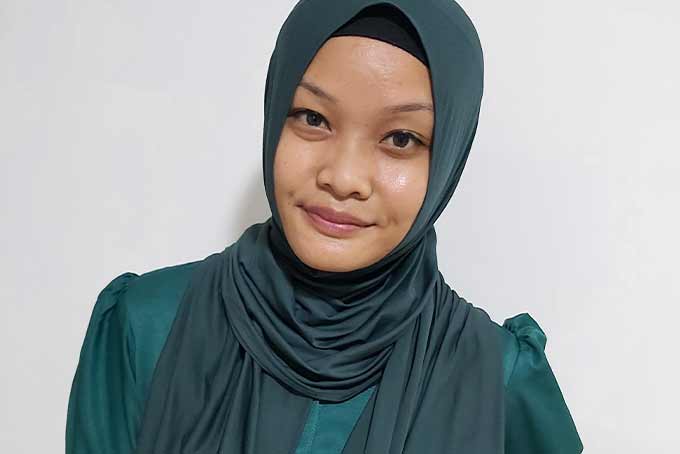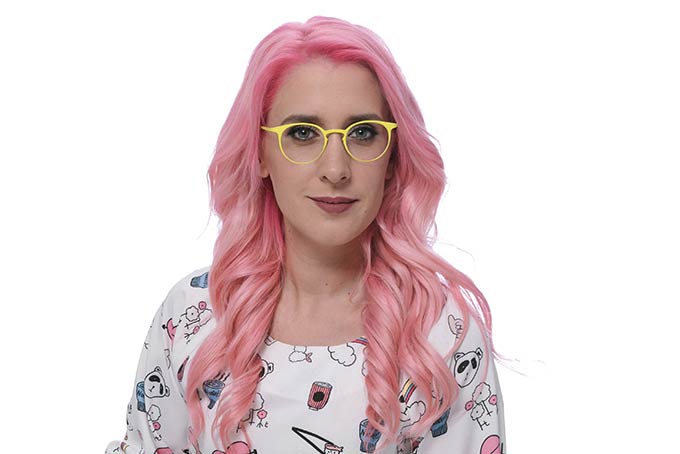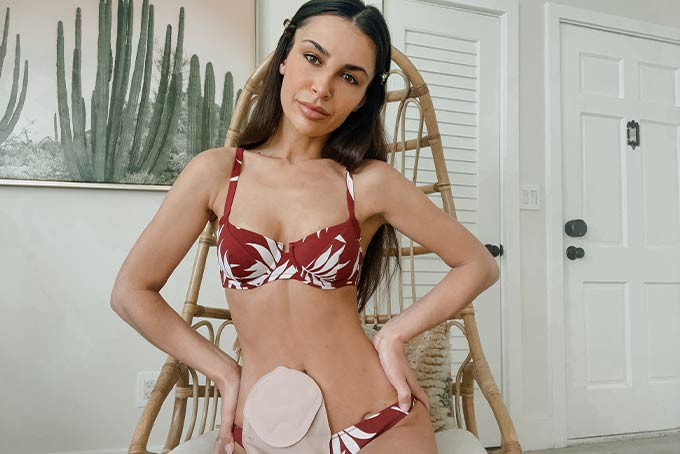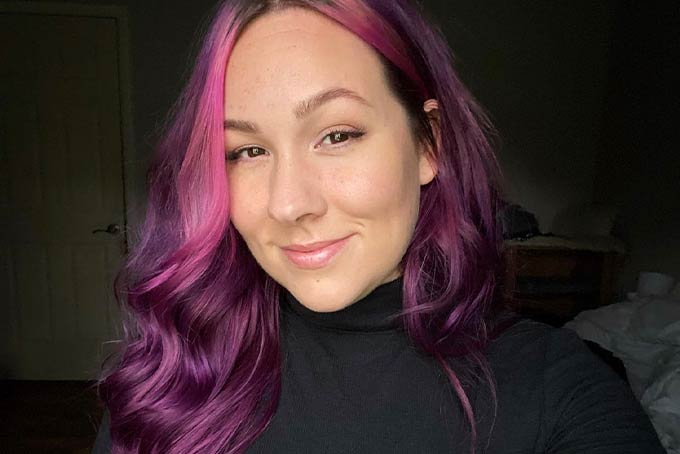Around one in six women will develop some form of chronic pelvic pain during their lifetime. Women who are affected by this life-impacting pain tend to miss out on life opportunities due to continually being “dismissed” and “misdiagnosed.”
This month marks the Pelvic Pain Awareness Month, a campaign launched by the International Pelvic Pain Society to shed light on the “constellation of conditions” that can lead to chronic pelvic pain and help put an end to the stigma around the debilitating condition that has left many women to suffer in silence.
“Pelvic pain is difficult for another person to ‘see’ or even understand if they have not experienced it – as compared to say – knee or shoulder pain. The pelvic region in many cultures is a taboo. Many people suffer in silence with pelvic pain and its related problems including sexual pain, bladder and bowel problems because of embarrassment. They may not even seek help due to this shame,” Kathryn Witzeman, MD, a board-certified ob-gyne and past president of the International Pelvic Pain Society global awareness organiser, tells Vogue Singapore.
What is chronic pelvic pain?
Chronic pelvic pain is an overarching term for sharp, sudden, constant and excruciating pain felt below the belly button and between the hips, lasting six months or longer.
Experts say chronic pelvic pain can be cyclic (meaning it may come and go during the menstrual cycle). It can have multiple causes either as a symptom of another disease or as a condition in its own right. However, a misdiagnosis leads to a delay in care.
Endometriosis, the most common cause of chronic pelvic pain, takes anywhere between four and 11 years for women to receive the correct diagnosis. Other associated conditions are adhesions, interstitial cystitis (IC), pelvic inflammatory disease, adenomyosis, painful bladder syndrome, adhesions, and irritable bowel syndrome (IBS), to name a few.
However, Singapore-based Consultant Vascular and Endovascular Surgeon, Dr Sriram Narayanan from The Venus Clinic, says that chronic pelvic pain is not always a sign of gynaecological issues such as endometriosis or adenomyosis. One of the most common causes of chronic pelvic pain is Pelvic Venous Disorder (PeVD), which is a vascular condition that must be diagnosed and treated by a vascular specialist.
PeVD affects up to 40 per cent of patients with chronic pelvic pain.
“PeVD can present with a wide variety of symptoms which is one of the reasons it is underdiagnosed. However, some PeVD symptoms do differ subtly from other causes of chronic pelvic pain,” explains Dr Narayanan.
The persistent physical, emotional, psychological and financial distress leaves 50 per cent of women with moderate to severe anxiety and more than 25% moderate with severe depression.
Witzeman strongly encourages people who are suffering with chronic pelvic pain and their loved ones to ask for help from their trusted healthcare provider or get more information through reputable websites like the International Pelvic Pain Society.
“Feel empowered by the knowledge that you are not alone; many other people experience these problems as well, and that there is power in numbers. Even feel empowered to share information you learn with your healthcare provider. Own your experience and share your story, so others may understand more deeply the extent that pelvic pain has in your life,” she says.
8 personal stories of chronic pelvic pain
Namira Binte Mohamad Marsudi, 36, Singapore

“I remember having pelvic pain when my period started at the age of 11. I noticed that the pain worsened over the years. From just throbbing cramps, the symptoms increased to bloating, nausea, backache, needling pain down to my legs, and lightheadedness. It was paralysing.
I finally decided to get checked at a local GP despite people telling me having a painful period was expected. I headed to the clinic, convinced that I could prove the people around me wrong. The result? I was diagnosed with dysmenorrhea which turned out to be common and nothing alarming as to how the doctor explained it.
Within that year, I also sought second and third opinions from several gynaecological clinics, who again diagnosed me with dysmenorrhea and ‘probably endometriosis.’
A few of them even advised me to get married soon and have kids, and the pain would go away after childbirth. I started doubting myself a lot at this point. I felt my body was betraying me, but I was at a loss for answers. The doctor dismissed the case as irritable bowel syndrome. She even told me it could be a psychological effect. I was diagnosed with depression.
At the age of 28, I was diagnosed with Stage 4 Endometriosis and Adenomyosis. The impact Endometriosis had on me did not stop at physical pain; it also wounded my love life, career, and mental health.
I was relieved that I could finally focus on managing my symptoms now that I had a name to it. Under my surgeon’s expertise, I was relieved of the pain so much that I was able to get back in the gym and break my personal best, time and again.
Happiness must come from within. I could not emphasise enough the importance of creating awareness. The importance of owning your story and sharing it. The importance of vocalising pain and seeking treatment.”
Cli Chiara Beltrame, 38, Italy

“I’ve always had painful periods, but it wasn’t until 2015 when I experienced “intense” pelvic pain that I was diagnosed with endometriosis. I feel lucky because I was diagnosed “quite early”.
Since endometriosis is a chronic and invalidating illness, it had a huge impact on both my physical and psychological health. Especially as a songwriter, I am used to travelling the world. Also knowing that there is no treatment for it affected me a lot.
I’m trying to raise awareness of this disease through my social networks, helping many girls who follow me to recognise their symptoms in time to prevent late diagnosis. I try to alert them that a painful period is not normal and that it’s important to keep monitoring our health and our period.”
Carla Cressy, 30, Essex, England

“I experienced my first pelvic pain attack a little over a year after my periods started. I was fourteen. For a while, my periods were becoming irregular, and the pain that came with them was unbearable. This pain was also accompanied by large ovarian cysts, which I later learned were ovarian endometriomas. It was my mum who made an appointment to see our family doctor and then a gynaecologist. However, like most people living with endometriosis, I was told it’s normal and part of being a woman.
As years went by, the pain became chronic. From the age of 21 to 24, I spent more time on the accident and emergency floor than I did anywhere else. I was misdiagnosed with dysmenorrhea (painful periods), IBS, and gastroenteritis (stomach flu). The list was endless.
It took 11 years for me to finally receive a diagnosis of endometriosis, I was 25. I had lost countless jobs and missed out on endless opportunities.
I’m now 30, infertile and in surgical menopause, with an ileostomy (stoma) and a reconstructed bladder and I still experience pelvic pain. I’ve come to the realisation that this is never going to leave me. It took a long time to accept this, but by taking the time to research and understand my condition better, I managed to find a way to live with it.
I just wish that pelvic pain and all types of chronic pain were taken seriously because if one of the 30 doctors I saw over the years recognised this wasn’t normal, my future could have been very different. I’m hopeful organisations such as The Endometriosis Foundation will help change this.”
Becca Jamieson, 42, New Zealand
“I first had my pelvic pain experience during my teenage years, but it worsened after I had my first two children. I have been battling chronic pelvic pain over the years.
I was finally diagnosed with IBS as of late 2021. As they [medical practitioners] couldn’t figure out what was causing my gut issues, I was diagnosed with gastritis in 2018.
My condition hugely affected me as a mum. I miss out on lots of things. My work and career has been hard. I had to stop working at various times, my relationships have failed along the way, I have lost confidence and social life and made my bedroom my sanctuary.
One thing I have found is that the medical system is failing and too many people are suffering. Through my own journey, I realised there is not enough awareness or education, so people are quite ignorant.”
Keisha Meek, 30 Leeds, UK

“I started with heavy periods at 11. They were heavy and extremely painful; the pain didn’t stop when my period stopped. I started to get bladder and bowel pains. I was constantly told it was normal to have pain with my period. The bowel pain continued, and I was told I had IBS.
I was dismissed up until 16 when they finally sent me for a scan. The scan revealed [I had] PCOS and a womb polyp. The polyp was removed and a Mirena coil was fitted to try and manage my heavy periods. However, all the symptoms continued. I was dismissed for a further year and told it was in my head.
It took me 10 years to get diagnosed. It took six years to get diagnosed with PCOS. I was diagnosed with diverticulosis at 28. All I can say to anyone reading this is that you know your own body. Do not allow anyone to say it’s in your head because you know when something isn’t right.
It has affected my life in many ways from relationships, my career, finances, fertility, and day-to-day tasks. The pain from all my illnesses causes fatigue. This is a whole body disease and has previously been found as far up as my appendix. I had my 12th surgery for endometriosis a couple of weeks ago. It is very hard but the support group ‘National Endometriosis Survivors Support’ has kept me going.”
Ronilyn Calumba, 34, Philippines

“I started having chronic pelvic pain in June 2018. But it wasn’t until 2019 when my menstrual cramps started to worsen that prompted an ob-gyn visit. They found I had an ovarian cyst and was later diagnosed with endometriosis.
I underwent laparotomy in March 2020 in hopes of lessening the pain but it didn’t help even after removing the “chocolate cyst” or ovarian endometrioma.
I’m still experiencing severe and chronic pelvic pain, menstrual cramps, heavy periods and my legs go numb. This debilitating and incapacitating condition affects my work. I would have pelvic pain attacks that would last 2 to 3 days. I am still getting my way around coping with it by resting, lying down and avoiding trigger positions.”
Felicity Bennetts, 32, Sunshine Coast, Australia

“I began to experience chronic pelvic pain around six years ago when I was 26 with what I thought was a simple UTI (urinary tract infection). I was misdiagnosed with a UTI by a few different GPs whom all doled out antibiotics without even looking at my test results. Six months’ worth of antibiotics destroyed my gut and weakened my immune system making the pain worse.
After a year of doctor’s appointments and countless tests, I finally found a female GP who knew that I had an overactive pelvic floor and painful bladder syndrome also known as IC (interstitial cystitis). I cried because finally, someone confirmed that what I was experiencing was real.
My symptoms were so severe I ended up having to quit my full-time job so I could work in a more flexible part-time environment to cope with my increasingly poor physical and mental state. My relationship suffered because sex became impossible, and it took years to work out how to navigate that. Friends and family simply couldn’t understand what I was going through because “I looked fine” and “seemed ok”. All of this meant I became increasingly isolated, depressed, and anxious. My mental health has never been worse.
I still have some pelvic pain. It’s easily managed when I go back to mindful habits that I developed while healing and with the help of my amazing physiotherapist who specialises in women’s pelvic health.”
Ashlee Smith, 31, Pennsylvania, USA

“My first experience with pelvic pain was when I got my period at the age of 11. Between the ages of 13 and 28, I was told multiple times that I was overreacting.
I was diagnosed with hypertonic pelvic floor dysfunction and vulvodynia first in 2019 by a pelvic floor physical therapist. While it was helpful to receive these diagnoses, we knew there was a root cause for both, and we didn’t know what it was. It wasn’t until 2020 that I was told it was likely that I had Adenomyosis. Being diagnosed with Adenomyosis was a huge moment for me; after 17 years of being dismissed, I finally felt like I wasn’t crazy anymore.
In February 2021, I had a hysterectomy to cure the Adenomyosis as my quality of life had greatly declined. The hysterectomy was a major decision to make as a childless 30-year-old, but it changed my life. It took away the debilitating uterine pain I had been experiencing for nearly two decades. I still use my heating pad and at home exercises provided by my physical therapist to help with the remaining pain.”
If you think that you might be showing symptoms of chronic pelvic pain, contact your doctor, local support group or global forum.





